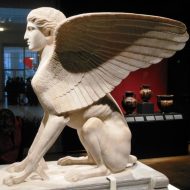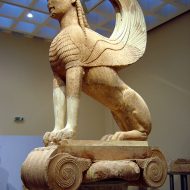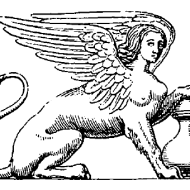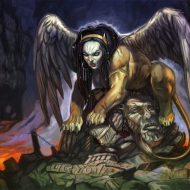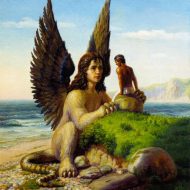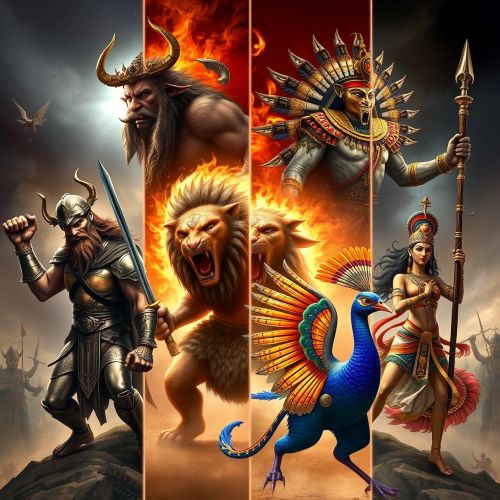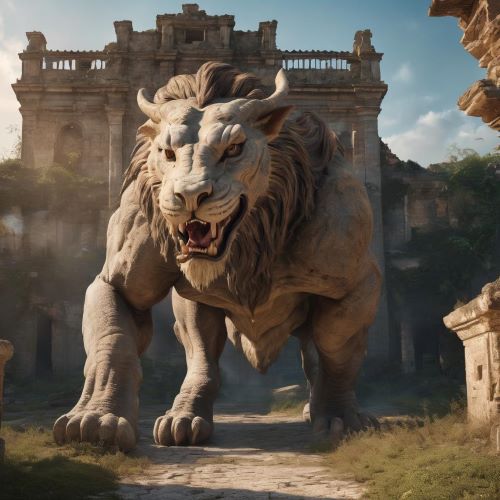Sphinx : The Riddler
Listen
At a glance
| Description | |
|---|---|
| Origin | Greek Mythology |
| Classification | Hybrids |
| Family Members | Orthrus (Father), Echidna (Mother) |
| Region | Greece |
| Associated With | Riddles, Protection |
Greek Sphinx
Introduction
The mythological creature known as the sphinx is an important figure in both Greek and Egyptian legend and art. It has a lion’s body and a human head. The word was derived from the Greek word “to bind” or “to squeeze,” but its origin is not related to the legend. The earliest known mention of the creature was by Hesiod.
The story of the sphinx of Thebes, which is regarded as the most famous figure in legend, revolves around the creature’s terrifying behaviour when it demanded the correct answer to a riddle that was taught to it by the Muses. Failing to answer that question would lead to the sphinx devouring the person. The legend of the sphinx being an omniscient being has grown, and its wisdom still remains relevant today.
Physical Traits
In Greek mythology, the sphinx is depicted as a woman’s head instead of a man’s. It also has the wings of an eagle and the tail and body of a lion. According to Pliny the Elder, Ethiopia produces numerous sphinxes, and experts from the 20th century have confirmed that the creatures have brown hair and breasts based on archaeological findings.
According to Statius, the sphinx is a winged creature with a long tail and a cloud of gore resting on its face. Its wings are sometimes described as those of an eagle and a serpent-headed tail.
Family
Hesiod believed that the sphinx was a daughter of the Orthrus and the Echidna. Lasus and Apollodorus also believed that it was a daughter of Typhon and Echidna. Furthermore, historians still do not know where the sphinx originated, as even in Greek mythology the lore suggests that sphinxes came from places such far away places as Africa.
Other Names
The source and versions of the name for the sphinx are not known and researchers have been at loggerheads coming to a common conclusion for the same.
Powers and Abilities
The story of the sphinx guarding the entrance of Thebes states that it asked a riddle to allow travellers to pass through. The exact answer given by the creature was not specified by the early tellers of the myth. According to lore, Hera or Ares sent the sphinx to Thebes from her Aethiopian homeland. Upon entering Thebes, the creature demanded the correct answer to the most famous riddle in history – : “Which creature has one voice and yet becomes four-footed and two-footed and three-footed?”. It would then attack anyone who could not provide the correct answer.
In order to solve the riddle, Oedipus had to explain that a man can walk on all fours at an early age, and he can use a walking stick in old age. Some accounts, however, state that there was a second answer. It states that there are two sisters, one of which gives birth to the other, while the latter gives birth to the first. The second riddle in the story asks who are the two sisters. In Ancient Greek, the word “day and night” refers to feminine and this is believed to be the answer.
The sphinx was bested at last. In some versions, Oedipus killed the creature, while others claim that it devoured itself. Both versions of the story help explain the transition between old and new religious practices. As a threshold figure, Oedipus can be regarded as a unifying force that helps guide the rise of the Olympian gods.
Modern Day Influence
The concept of answering a riddle to gain access to some great treasure has been replicated in numerous movies and other pop culture references. Many Greek retellings in video games also place the sphinx in crucial plot roles especially before major boss fights or transitions to the next level.
Related Images
Source
Wikipedia Contributors. “Sphinx.” Wikipedia, The Wikimedia Foundation, 20 Dec. 2023, https://en.wikipedia.org/wiki/Sphinx.
Encyclopedia Britannica. “Sphinx.” Encyclopedia Britannica, 2023, https://www.britannica.com/topic/Sphinx.
Theoi Greek Mythology. “Sphinx.” Theoi Greek Mythology, 2023, https://www.theoi.com/Monstruous/Sphinx.html.
GreekMythology.com. “The Sphinx.” GreekMythology.com, 2023, https://www.greekmythology.com/Myths/Creatures/Sphinx/sphinx.html.
Perseus Digital Library. “Sphinx.” Perseus Digital Library, Tufts University, 2023, http://www.perseus.tufts.edu/hopper/search.
Theoi Project. “Sphinx.” Theoi Project, 2023, https://www.theoi.com/Monstruous/Sphinx.html.
Ancient.eu. “Sphinx.” Ancient History Encyclopedia, 23 Nov. 2020, https://www.ancient.eu/Sphinx.
Frequently Asked Questions
What is the Greek Sphinx?
The Greek Sphinx is a mythical creature with the body of a lion, the head of a woman, and the wings of an eagle. It is most famously known from the myth of Oedipus. The Sphinx guarded the entrance to the city of Thebes and posed a riddle to travelers
Who defeated the Sphinx?
The Greek Sphinx was famously defeated by Oedipus. The Sphinx had been guarding the entrance to the city of Thebes and posed a riddle to travelers: “What walks on four legs in the morning, two legs at noon, and three legs in the evening?” Those who failed to answer correctly were devoured by the Sphinx.
What is the origin of the Greek Sphinx myth?
The myth of the Greek Sphinx originates from ancient Greek mythology, specifically linked to the city of Thebes. The Sphinx is believed to be sent by the gods, particularly Hera or Ares, to punish the city of Thebes. The creature’s presence and the riddle it posed were part of the divine retribution until Oedipus successfully answered the riddle.
What was the riddle posed by the Greek Sphinx?
The riddle posed by the Greek Sphinx was: “What walks on four legs in the morning, two legs at noon, and three legs in the evening?” The correct answer to the riddle is “man,” who crawls on all fours as an infant, walks on two legs as an adult, and uses a cane in old age.
What happened to the Sphinx after Oedipus solved the riddle?
After Oedipus successfully solved the Sphinx’s riddle, the Sphinx was defeated and, in despair, threw herself off a cliff, leading to her death. This act marked the end of her reign of terror over Thebes and allowed Oedipus to enter the city, where he eventually became its king

